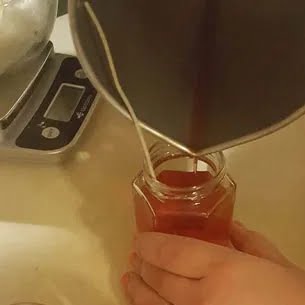What’s the best wax to use for candle making? Choosing the right wax is crucial in creating high-quality candles. The type of wax used not only impacts the appearance and scent of the final product but also its burn time and environmental impact.
In this article, we will explore different types of wax commonly used in candle making, including paraffin, soy, beeswax, palm, and coconut wax. We will also discuss the advantages of using blended waxes for customization options. Understanding the characteristics and benefits of each wax will help you make an informed decision when selecting the best option for your candle making endeavors.
When it comes to candle making, selecting the appropriate wax is a crucial factor that determines the overall quality of the finished product. The choice of wax affects not only how the candle burns and holds its shape but also influences its fragrance throw and environmental impact.
Different types of waxes offer unique characteristics and benefits that cater to various preferences and needs. Whether you prioritize eco-friendliness, scent throw, or aesthetic appeal, there is a suitable wax option for you.
In this article, we will delve into the details of paraffin, soy, beeswax, palm, coconut waxes as well as explore blended waxes for those looking to customize their candles based on specific requirements. By understanding what each type of wax has to offer, you can make an informed decision on what would work best for your candle making projects.
Paraffin Wax
When it comes to candle making, choosing the right wax is essential for creating high-quality candles. Paraffin wax is one of the most popular choices for candle making due to its affordability and versatility. It is derived from petroleum, and its properties make it an excellent option for producing a variety of candles. Paraffin wax is available in different melting points, which allows for flexibility in creating candles with different textures and finishes.
One of the main benefits of using paraffin wax for candle making is its ability to hold color and fragrance well, resulting in vibrant and aromatic candles. Additionally, paraffin wax has a lower melting point compared to other waxes, which means that it burns at a cooler temperature and provides a longer-lasting candle. Another advantage of paraffin wax is its ability to release from molds easily, making it ideal for creating intricate or decorative candle designs.
Overall, paraffin wax offers numerous benefits as an ideal choice for candle making due to its versatility and cost-effectiveness. Whether you are a beginner or experienced candle maker, considering paraffin wax as your primary wax choice can result in stunning and long-lasting candles.
| Characteristics | Benefits |
|---|---|
| Lower melting point | Longer-lasting candles |
| Ability to hold color and fragrance well | Vibrant and aromatic candles |
| Ease of releasing from molds | Ideal for intricate designs |
Soy Wax
When it comes to candle making, choosing the right wax is crucial to achieving the desired results. Among the various options available, soy wax has gained popularity for its numerous benefits. From its environmental advantages to its clean-burning properties, soy wax offers a compelling option for both amateur and professional candle makers.
Advantages of Soy Wax
One of the key advantages of using soy wax for candle making is its clean-burning nature. Soy wax produces minimal soot and smoke, creating a healthier and more enjoyable atmosphere when the candles are lit. Additionally, soy wax is known for its excellent scent throw, allowing it to effectively carry fragrances and fill a room with enticing aromas. This makes it an ideal choice for scented candle enthusiasts who want to fully experience the aroma of their chosen fragrance.
Environmental Benefits
In addition to its performance advantages, soy wax also offers significant environmental benefits. As a renewable resource, soy wax is biodegradable and comes from a sustainable source – soybeans. This makes it a more eco-friendly option compared to petroleum-based paraffin wax. For environmentally conscious individuals or businesses, choosing soy wax can align with their commitment to sustainability and reducing their carbon footprint.
Choosing the Best Wax
When considering what’s the best wax to use for candle making, it ultimately comes down to individual preferences and priorities. For those seeking a natural and environmentally friendly option with excellent performance characteristics, soy wax may be the ideal choice.
However, it’s important to consider factors such as scent throw, burn time, cost, and availability when making a decision. Ultimately, exploring different types of waxes and understanding their unique qualities can help candle makers make an informed choice that aligns with their specific needs and values.
Beeswax
Unique Properties
One of the key characteristics of beeswax is its natural aroma, which adds a warm and sweet scent to the candles. This makes it an ideal choice for those who prefer a subtle, honey-like fragrance in their candles. Additionally, beeswax has a higher melting point compared to other waxes, which results in longer burn times and reduced dripping.
Natural and Sustainable Aspects
Another factor that sets beeswax apart is its natural and sustainable nature. Beeswax is produced by honeybees as they construct their honeycombs, making it a renewable resource. Its production does not involve any chemical processing, making it an environmentally friendly option for candle making.
Choosing Beeswax
When considering what’s the best wax to use for candle making, beeswax is a top choice for those looking for a natural and sustainable option with unique properties. While it may be more expensive than other waxes, the benefits of beeswax make it worth the investment for many candle makers. Whether you prioritize natural fragrances, long burn times, or eco-friendly materials, beeswax can be an excellent choice for creating high-quality candles.
Palm Wax
Here are some key features and considerations when using palm wax for candle making:
- Sustainable Sourcing: Palm wax is often sourced from sustainable plantations, which makes it an environmentally friendly option for candle makers who prioritize sustainability in their craft.
- Clean Burning: Candles made from palm wax are known for their clean and long-lasting burn. They produce minimal soot, which contributes to a healthier indoor environment.
- Ethical Considerations: When choosing palm wax for candle making, it’s important to ensure that the source of the wax aligns with ethical and fair labor practices. Look for certifications such as RSPO (Roundtable on Sustainable Palm Oil) to support sustainable and responsible production methods.
As candle making continues to evolve, palm wax offers a compelling option for crafters looking to create environmentally conscious and visually appealing candles. Whether used alone or in combination with other waxes, palm wax provides a unique opportunity to explore creative possibilities while supporting sustainable practices in the industry.
Coconut Wax
When it comes to candle making, coconut wax has gained popularity in recent years due to its unique properties and benefits. Derived from the meat of coconuts, coconut wax offers a clean and slow burn, giving candles a longer-lasting and more even distribution of fragrance. Additionally, coconut wax is known for its ability to hold a higher volume of fragrance compared to other waxes, resulting in a stronger scent throw when the candle is lit.
One of the key advantages of using coconut wax for candle making is its sustainability. Coconut trees are highly renewable and sustainable resources, making coconut wax an eco-friendly option for environmentally conscious crafters. In addition to being biodegradable, coconut wax also has a lower melting point, which means it requires less heat to create a pool of melted wax while burning, contributing to its energy efficiency.
The growing popularity of coconut wax in the candle making industry can be attributed to its appeal to health-conscious consumers. Coconut wax is free from toxic materials and harmful byproducts, making it a safer alternative for those who are concerned about indoor air quality when burning candles. As the demand for natural and non-toxic products continues to rise, coconut wax presents itself as an attractive choice for candle makers looking to cater to this market segment.
- Some popular Coconut Wax brands:
- Nature’s Blends
- CocoSoy Bliss
- KeraSoy NatureWax
Blended Waxes
When it comes to candle making, using blended waxes can offer a range of advantages. Blended waxes are created by mixing different types of waxes together, such as paraffin, soy, beeswax, palm, and coconut wax. This combination allows for the enhancement of specific properties and the customization of the final product. One of the significant benefits of using blended waxes is the ability to achieve a unique balance between scent throw, burn time, and visual appeal in candles.
Blended waxes can provide a more consistent and stable burn compared to single wax formulations. By combining various waxes, candle makers have the flexibility to create a product that meets their specific requirements and preferences. For example, blending paraffin wax with soy wax can result in candles that have excellent hot throw while still maintaining a clean burn. Additionally, blended waxes offer enhanced fragrance retention and better adhesion to the container, ensuring an overall higher quality candle.
Blended waxes also allow for increased creativity in candle making. They can be customized by adjusting the ratios of different waxes to achieve desired results such as color vibrancy, texture, and burn characteristics. With more control over the outcome of their candles, crafters have the opportunity to experiment with different blends and create unique products that stand out in the market.
| Advantages | Benefits |
|---|---|
| Consistent and stable burn | Customization options |
| Enhanced fragrance retention | Increased creativity in candle making |
Conclusion
In conclusion, the choice of wax plays a crucial role in the quality, performance, and overall appeal of homemade candles. Each type of wax – whether it is paraffin, soy, beeswax, palm wax, coconut wax, or blended waxes – offers unique characteristics and benefits that cater to different preferences and requirements. When considering what’s the best wax to use for candle making, it is essential to take into account factors such as environmental impact, scent throw, burn time, and aesthetic appeal.
For those seeking a traditional option with excellent scent throw and color possibilities, paraffin wax may be the best choice. On the other hand, environmentally-conscious individuals may opt for soy wax or beeswax due to their renewable and sustainable nature. Palm wax offers a beautiful crystalline appearance and long burn time but comes with ethical considerations.
Coconut wax is gaining popularity for its clean burn and excellent scent throw. Additionally, blended waxes provide a customizable option for those looking to tailor their candle making experience to their specific needs.
Ultimately, the best wax for candle making depends on individual preferences and needs. Experimenting with different waxes and understanding their unique properties can help crafters determine the most suitable option for their desired candles. Whether it is for personal use or business ventures, selecting the right wax can make a significant difference in producing high-quality and desirable candles.

Welcome to my candle making blog! In this blog, I will be sharing my tips and tricks for making candles. I will also be sharing some of my favorite recipes.

